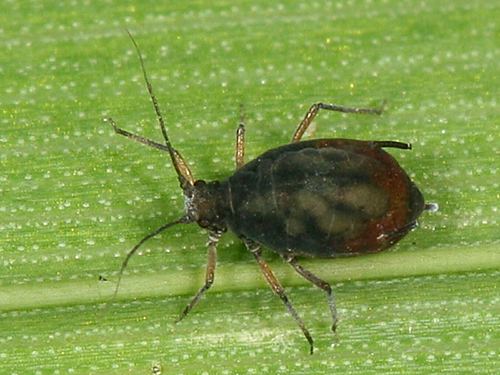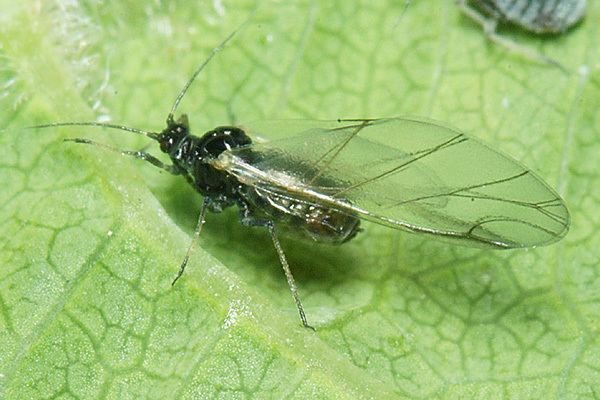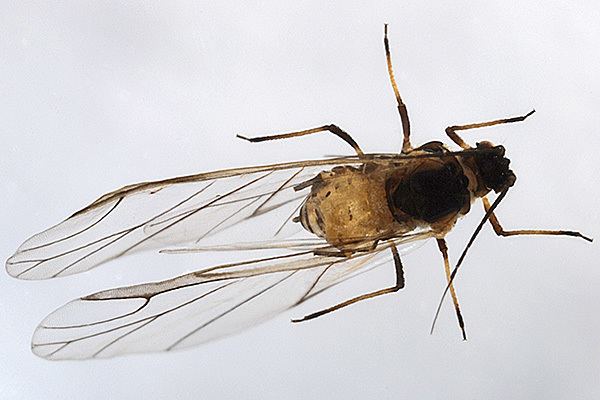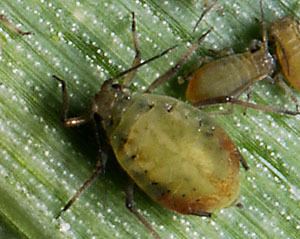Higher classification Rhopalosiphum | Scientific name Rhopalosiphum padi Rank Species | |
 | ||
Similar Rhopalosiphum, Aphid, Sitobion avenae, Insect, Aphididae | ||
Puceron bicolore des c r ales rhopalosiphum padi sur ma s
The Bird cherry-oat aphid (Rhopalosiphum padi) is an aphid in the superfamily Aphidoidea in the order Hemiptera. It is a true bug and sucks sap from plants. It is often considered as a major pest in cereals in temperate cereal crops, and particularly in some Northern European countries. It is the principal vector of many viruses including the barley yellow dwarf virus (BYDV), the Cereal yellow dwarf virus–RPV, Filaree red leaf virus, Maize leaf fleck virus, and Rice giallume virus, as well as oat yellow leaf disease and the Onion yellow dwarf virus.
Contents
- Puceron bicolore des c r ales rhopalosiphum padi sur ma s
- Getreidel use jugando ambos sitobion avenae y rhopalosiphum padi
- Host plants and distribution
- Natural enemies
- References

Getreidel use jugando ambos sitobion avenae y rhopalosiphum padi
Host plants and distribution

As the name suggests, the primary host is Prunus padus, the Bird cherry tree where R. padi overwinters as eggs in Europe. In Northern America, it is found to overwinter on Prunus virginiana (common choke-cherry). At spring, it attacks all major cereals and pasture grasses and particularly barley, oats and wheat and other Gramineae members. It can also be found in maize. It has a worldwide distribution.
Natural enemies

A number of aphidophagous arthropods feed on R. padi and can reduce their population density. Because of R. padi's distribution at the basis of cereal stems, generalist predators such as carabids and spiders can reduce their population density. In addition, more specialist predators include adults and larvae of Coccinellids, hoverfly larvae and lacewing larvae.

